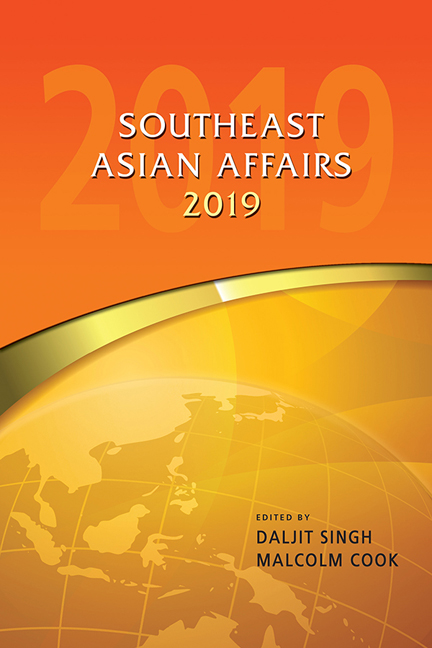Book contents
- Frontmatter
- Contents
- Introduction
- THE REGION
- Challenges to Southeast Asian Regionalism in 2018
- Regional Integration in Asia and the Pacific, and Dealing with Short and Long Term Challenges
- Looking West, Acting East: India's Indo-Pacific Strategy
- An Australian Vision of the Indo-Pacific and What It Means for Southeast Asia
- The Trump Administration's Free and Open Indo-Pacific Approach
- Japan's “Free and Open Indo-Pacific Strategy” and Its Implication for ASEAN
- BRUNEI DARUSSALAM
- CAMBODIA
- INDONESIA
- LAOS
- MALAYSIA
- MYANMAR
- THE PHILIPPINES
- SINGAPORE
- THAILAND
- TIMOR-LESTE
- VIETNAM
The Trump Administration's Free and Open Indo-Pacific Approach
from THE REGION
Published online by Cambridge University Press: 07 September 2019
- Frontmatter
- Contents
- Introduction
- THE REGION
- Challenges to Southeast Asian Regionalism in 2018
- Regional Integration in Asia and the Pacific, and Dealing with Short and Long Term Challenges
- Looking West, Acting East: India's Indo-Pacific Strategy
- An Australian Vision of the Indo-Pacific and What It Means for Southeast Asia
- The Trump Administration's Free and Open Indo-Pacific Approach
- Japan's “Free and Open Indo-Pacific Strategy” and Its Implication for ASEAN
- BRUNEI DARUSSALAM
- CAMBODIA
- INDONESIA
- LAOS
- MALAYSIA
- MYANMAR
- THE PHILIPPINES
- SINGAPORE
- THAILAND
- TIMOR-LESTE
- VIETNAM
Summary
After nearly two years, the Trump administration's approach to the Indo-Pacific region has finally taken shape. Its objectives are a “Free and Open Indo-Pacific”, in line with decades of U.S. policy in the region, but in a new context of outright strategic competition with China. Its means include familiar tools of U.S. engagement, with some modest improvements for the times. But in Donald Trump's America, actions often do not support stated goals and, in the case of policy in the Indo-Pacific, President Trump's personal instincts, in particular his dogmatic approach to trade, have undermined his administration's best efforts in the region.
Early Days
Over the course of two years, a series of formal speeches and documents have articulated in increasing detail the administration's Indo-Pacific approach. Throughout this period, the administration has also faced frequent criticism for the slow pace of policy formulation and in appointing key Asia policymaking officials. To understand why policy formulation has been so slow, it is important to go back to Trump's unconventional presidential campaign and presidential transition.
While all major U.S. presidential campaigns in recent memory have been supported by networks of public policy professionals helping the nominees and crafting policy agendas for the event the candidate is elected, Donald Trump's presidential campaign was different. In stark contrast to Hillary Clinton's 2016 campaign — with an enormous team of unpaid foreign policy advisors working to develop a potential presidential agenda, including a strategy for Asia — Trump had almost no foreign policy advisors. During the 2016 Republican primary season, leading Republican foreign policy hands supported a range of candidates, but almost none signed up to support candidate Donald Trump. Instead, many leading Republican experts actively opposed Trump's candidacy. Furthermore, soon after the election, Trump disbanded his small presidential transition office, depleting any preparatory work that had been done.
Without a coherent foreign policy framework and with little expertise on Asia within its ranks, the early Trump administration's approach to Asia became highly reactionary, guided by a deep scepticism of China and the reality that North Korea presented an increasingly untenable threat to the U.S. homeland. In particular, the North Korea threat forced the administration to focus considerable attention on Asia in its first few months with a flurry of meetings with Asian leaders.
- Type
- Chapter
- Information
- Southeast Asian Affairs 2019 , pp. 61 - 68Publisher: ISEAS–Yusof Ishak InstitutePrint publication year: 2019



